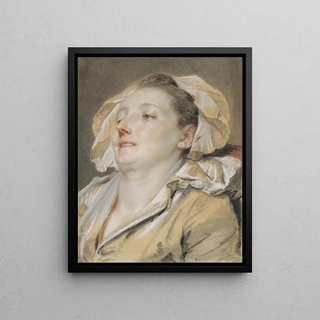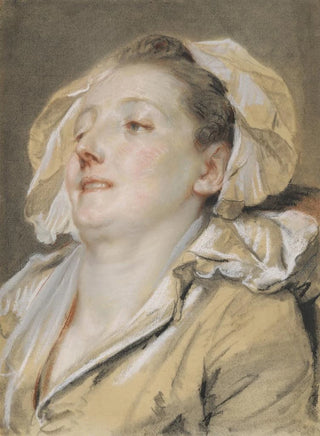Art print | La Mère Bien-Aimée - Jean-Baptiste Greuze


View from behind

Frame (optional)
La Mère Bien-Aimée - Jean-Baptiste Greuze – Captivating Introduction
In the vast panorama of art history, certain works stand out for their ability to evoke deep and universal emotions. "La Mère Bien-Aimée," painted by Jean-Baptiste Greuze, is undoubtedly one of these masterpieces. This painting, depicting a mother and her child in a moment of palpable tenderness, transcends time and eras, touching the hearts of every viewer. Through this work, Greuze manages to capture the very essence of maternal love, a theme that still resonates today with remarkable intensity. The art print La Mère Bien-Aimée - Jean-Baptiste Greuze thus allows you to rediscover this emotional scene in the comfort of your own space, while celebrating the artist's virtuosity.
Style and uniqueness of the work
Greuze's style is characterized by meticulous attention to detail and masterful use of light and color. In "La Mère Bien-Aimée," the artist skillfully plays with shadows and highlights to create an intimate, almost sacred atmosphere. The faces of the characters are imbued with softness and delicacy that reveal profound humanity. The composition is carefully crafted, with each element placed with precision to guide the viewer's gaze. The expressions and gestures of the figures are so authentic that they seem to tell a story—a story of love and devotion. Greuze, a master of the genre, succeeds in turning this scene into a true narrative painting, where every detail matters and contributes to the overall emotion.
The artist and his influence
Jean-Baptiste Greuze, an emblematic figure of the 18th century, established himself as one of the great masters of the rococo movement. His work, often focused on themes of everyday life and human relationships, influenced many artists of his time and subsequent generations. Greuze gave voice to human emotions, transforming ordinary scenes into moments of beauty and poetry. His innovative approach to portraiture and genre painting paved the way for a new way of conceiving art, where the psychology of the characters takes precedence over the simple

Matte finish

View from behind

Frame (optional)
La Mère Bien-Aimée - Jean-Baptiste Greuze – Captivating Introduction
In the vast panorama of art history, certain works stand out for their ability to evoke deep and universal emotions. "La Mère Bien-Aimée," painted by Jean-Baptiste Greuze, is undoubtedly one of these masterpieces. This painting, depicting a mother and her child in a moment of palpable tenderness, transcends time and eras, touching the hearts of every viewer. Through this work, Greuze manages to capture the very essence of maternal love, a theme that still resonates today with remarkable intensity. The art print La Mère Bien-Aimée - Jean-Baptiste Greuze thus allows you to rediscover this emotional scene in the comfort of your own space, while celebrating the artist's virtuosity.
Style and uniqueness of the work
Greuze's style is characterized by meticulous attention to detail and masterful use of light and color. In "La Mère Bien-Aimée," the artist skillfully plays with shadows and highlights to create an intimate, almost sacred atmosphere. The faces of the characters are imbued with softness and delicacy that reveal profound humanity. The composition is carefully crafted, with each element placed with precision to guide the viewer's gaze. The expressions and gestures of the figures are so authentic that they seem to tell a story—a story of love and devotion. Greuze, a master of the genre, succeeds in turning this scene into a true narrative painting, where every detail matters and contributes to the overall emotion.
The artist and his influence
Jean-Baptiste Greuze, an emblematic figure of the 18th century, established himself as one of the great masters of the rococo movement. His work, often focused on themes of everyday life and human relationships, influenced many artists of his time and subsequent generations. Greuze gave voice to human emotions, transforming ordinary scenes into moments of beauty and poetry. His innovative approach to portraiture and genre painting paved the way for a new way of conceiving art, where the psychology of the characters takes precedence over the simple






